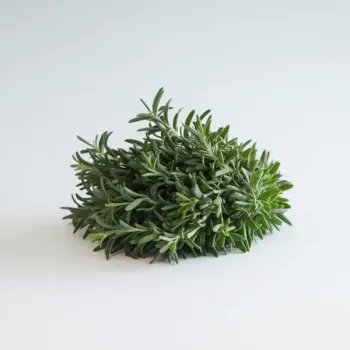
Substitutes for marjoram in cooking include thyme, sage, rosemary, oregano, basil, and summer savory. These alternatives offer similar flavor profiles suitable for various dishes, with adjustments in ratios to match marjoram's taste.
Thyme's earthiness and slight lemony undertone make it a good match for poultry and meat. Use in a 1:1 ratio, adjusting to taste. Brands like Simply Organic and Frontier Co-op are good options.
Sage's hearty flavor and aroma work well in heavier meat dishes and sausage recipes. Use in a 1:2 ratio compared to marjoram. Consider McCormick and Simply Organic for quality sage.
Rosemary's woody, citrus-like fragrance can replace marjoram in meat preparations, but it is stronger, so use half the amount. Brands such as McCormick and Spice Islands offer high-quality rosemary.
Oregano is a close relative to marjoram with a stronger, more robust flavor. It works well in hearty dishes like stews and meat rubs. Use it sparingly in a 1:2 ratio of oregano to marjoram to avoid overpowering the dish. Popular brands include McCormick and Spice Islands.
Thyme shares a similar earthy and slightly floral flavor profile. It's a versatile substitute in soups and dressings. Use in a 1:1 ratio, keeping in mind that thyme has a somewhat more pungent taste. Brands like Simply Organic and Frontier Co-op are popular choices.
Basil can provide a fresh, aromatic lift to dishes, especially in Italian cuisine. It's a good substitute in salads and lighter soups. Use fresh basil in a 1:1 ratio or dried basil in a 1:2 ratio, as it's milder than marjoram. Look for brands like McCormick and Spice Islands.
Sage has a warm, pine-like flavor that can replace marjoram in meat dishes and stuffings. Use in a 1:2 ratio, as sage is more potent. It's important to add it early in the cooking process. Brands such as McCormick and Simply Organic offer high-quality sage.
Oregano is a staple in Mediterranean cooking and can stand in for marjoram to deliver a similar flavor profile, though more robust. Use a 1:2 ratio of oregano to marjoram. McCormick and Spice Islands are among the popular brands available.
Thyme complements Mediterranean dishes well, offering a subtle earthiness. Use it in a 1:1 ratio but be mindful of its stronger flavor. Brands like Simply Organic and Frontier Co-op are recommended.
Basil's fresh and aromatic qualities make it a suitable substitute in Mediterranean vegetable dishes and herb blends. Use it in a 1:1 ratio for fresh, or 1:2 for dried. McCormick and Spice Islands are well-known brands.
Oregano's bold flavor can enrich vegetarian and vegan recipes without overpowering other ingredients. Use a 1:2 ratio of oregano to marjoram. McCormick and Spice Islands are reliable brands.
Basil offers a light, sweet flavor that can enhance vegetarian dishes, particularly those with tomatoes. Use in a 1:1 ratio for fresh, or 1:2 for dried basil. Brands like McCormick and Spice Islands are favorites.
Summer savory provides a peppery, thyme-like flavor that is suitable for bean dishes and vegetable soups. Use in a 1:1 ratio as a substitute for marjoram. Look for brands such as Simply Organic and Frontier Co-op.

Your ultimate Recipe Box, Meal Planner, and Cooking Class all in one
| Recipe Category | Substitutes |
|---|---|
| Poultry and Meat | Thyme, Sage, Rosemary |
| Herb-Seasoned Dishes | Oregano, Thyme, Basil, Sage |
| Mediterranean Recipes | Oregano, Thyme, Basil |
| Vegetarian and Vegan Recipes | Oregano, Basil, Summer Savory |
While marjoram has a unique flavor, these substitutes can be used to capture the essence of dishes that typically call for this herb. Each substitute has its own characteristics, allowing for versatility and creativity in the kitchen. Remember to adjust quantities based on the potency of the herbs and the desired flavor profile of your dish.